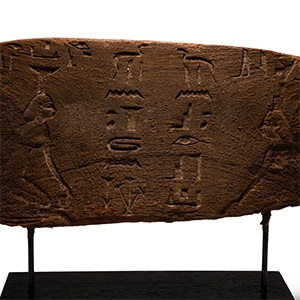Home > Auctions > 4 June - 8 June 2024
Ancient Art, Antiquities, Natural History & Coins
Auction Highlights:
Acquired from Sir William Matthew Flinders Petrie FRS FBA (1853-1942), who had both found and repaired the piece; a British Egyptologist and a pioneer of systematic methodology in archaeology and the preservation of artefacts.
From the private collection of the late Mrs Belinda Ellison, long time member of the Egyptian Exploration Society, c.1940-2020.
Cf. Guidotti, M.C., Vasi dall’epoca protodinastica al Nuovo Regno, Museo Egizio di Firenze, Rome, 1991, p.78, no.11.
Acquired in the mid 1980s-1990s.
From the family collection of Mr S.A., Switzerland, thence by descent.
Private collection since the late 1990s.
Cf. Guidotti, M.C., Vasi dall’epoca protodinastica al Nuovo Regno, Museo Egizio di Firenze, Rome, 1991, pp.120-121, for examples.
Acquired on the German art market, 1989-1995.
with The Museum Gallery, 19 Bury Place, London, WC1, UK, 1998-2003.
Property of a London based academic, 2003-present.
with Sotheby's, London, 5 July 1982, no.190.
with Sotheby's, London, 13-14 December 1990, no.18.
Acquired from the above sale by the late Robert Browne.
Property of Ms L.F., London, UK.
Accompanied by a copy of an Art Loss Register certificate no.S00243674.
This lot has been checked against the Interpol Database of stolen works of art and is accompanied by a search certificate number no.12073-217362.
Cf. Ziegler, C., Les statues égyptiennes de l’Ancien Empire, Paris, 1997, p. 231, no. 71, for similar head.
Ex Bretagne Encheres, Hotel des Ventes de Rennes, France, 2005-2006.
Property of a French collector.
Cf. Brovarski, E., Freed, R.E., Doll, S.K., Egypt’s Golden Age: The Art of Living in the New Kingdom 1558-1085 B.C., Boston, 1982, p.136, no.132, for a patterned basket.
Acquired on the German art market, 1989-1995.
with The Museum Gallery, 19 Bury Place, London, WC1, UK, 1998-2003.
Property of a London based academic, 2003-present.
Cf. Davies, N. de G. and Laming Macadam, F., A Corpus of Inscribed Egyptian Funerary Cones, Oxford, 1957, cone number 378.
Funerary cones were used to decorate the facades of tombs. The 'tail' was pushed into the soft plaster coating so that only the disc was visible. This cone belongs to Djedher, whose tomb is likely to be in the Asasif region of the Theban necropolis, where other examples of his funerary cones have been found.
Galerie Orient-Occident, Paris, 1990.
Parisian private collection.
with Pierre Berge, 2 February 2017, lot 85.
Cf. Tiribilli, E., The bronze figurines of the Petrie Museum from 2000 BC to AD 400, GHP Egyptology 28, London, 2018, p.302, no. 499, for a less elaborately decorated, inscribed base.
The bound ibex is a frequent image in ancient Egyptian art and a prized foodstuff. The animal's presence on this base symbolises the finest offerings to the once-attached deity.
Old mounting to the top.
From a private estate, Suffolk, UK.
Acquired from a UK antiques fair.
Property of Mr E.D., a UK professional.
See Parlasca, K., Sailor, H., Moments, Mummy Portraits and Egyptian Funerary Art from Roman Times, Frankfurt, 1999, for discussion.
From the collection of Danish furniture designer Ole Wanscher (1903-1985).
Accompanied by an academic report by Egyptologist Paul Whelan.
Accompanied by a copy of a photo of Wanscher in his office, circa 1960.
This lot has been checked against the Interpol Database of stolen works of art and is accompanied by search certificate number no.11843-207728.
Ole Wanscher was a leading figure of the Scandinavian Design movement. Wanscher was inspired by ancient designs, and one of his most famous creations, the 'Egyptian Stool', was based on folding chairs from Egypt's New Kingdom. This piece is visible in the background of a photo of Wanscher in his office, circa 1960.
Old mounting to the reverse.
From a private estate, Suffolk, UK.
Acquired from a UK antiques fair.
Property of Mr E.D., a UK professional.
This lot has been checked against the Interpol Database of stolen works of art and is accompanied by a search certificate number no.12076-217420.
See Parlasca, K., Sailor, H., Moments, Mummy Portraits and Egyptian Funerary Art from Roman Times, Frankfurt, 1999, for discussion.
Base and collection numbers suggesting it may have been deaccessioned from The Metropolitan Museum of Art.
Joseph Klein collection, formed in New York between 1941-1980, thence by descent.
with Bonhams, London, 24 October 2012, no.3.
From an important Cambridgeshire estate; thence by descent.
Cf. Hastings, E.A., The Sculpture from the Sacred Animal Necropolis at North Saqqâra 1964-76, London, 1997, pl. LV, for a bull or bull calf statue associated with the Apis cult.
L.P. di Cesnola, A Descriptive Atlas of the Cesnola Collection of Cypriote Antiquities in the Metropolitan Museum of Art, New York, vol. I, Boston, 1885, pl. 98.
This possibly represents a bull or bull calf associated with the Apis cult.
From a Dutch private collection, acquired in the 1970s.
Acquired from J. Bagot Ancient Art, Barcelona, Spain, in 2016.
From the Keane private collection, Kent, UK.
Accompanied by a copy of the J. Bagot certificate of authenticity and invoice (2,800 euros).
This lot has been checked against the Interpol Database of stolen works of art and is accompanied by a search certificate number no.12078-216769.
'Padi Wsir' is probably the name of the owner of the sarcophagus; the same name was elsewhere transliterated as 'Padiusir' and Hellenised as 'Petosiris'', a familiar name in the Late Period.
1 - 12 of 2809 LOTS

.jpg)

.jpg)
.jpg)
.jpg)
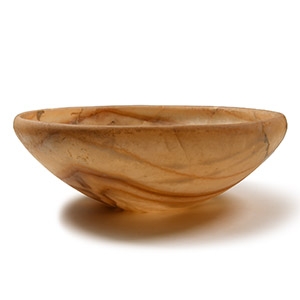
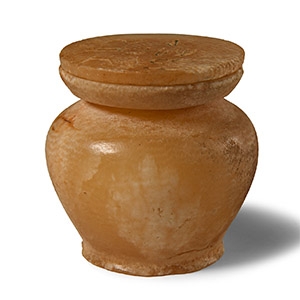

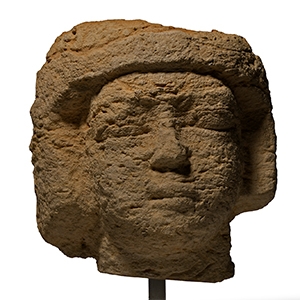

.jpg)
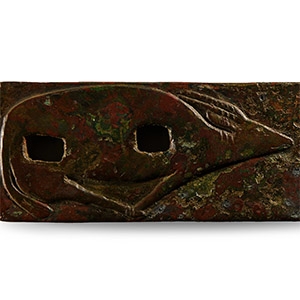
.jpg)
.jpg)
.jpg)

